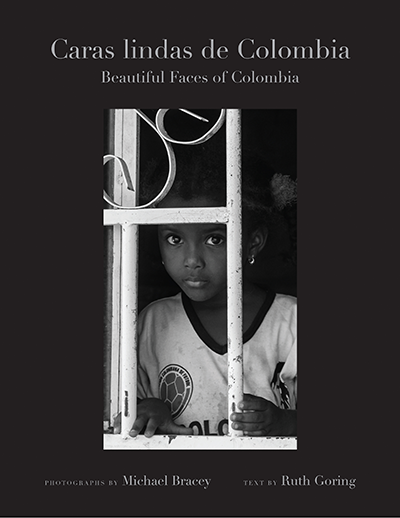 Caras Lindas de Colombia/Beautiful Faces of Colombia
Caras Lindas de Colombia/Beautiful Faces of Colombia
Caras Lindas de Colombia/Beautiful Faces of Colombia is a significant book of photojournalism celebrating Colombia's African-descendant communities, with bilingual text by Ruth Goring and black-and-white photos by Michael Bracey.
The book is part of Bracey's project of photographing the African diaspora in the Americas. I learned from his preface that Colombia has the third-largest African-descendant population in the Americas, after Brazil and the US. Goring, a daughter of missionaries, grew up in Colombia. Together with Bracey's partner, Maria Vázquez, they traveled through Colombia in 2014 to document groups of local activists fighting racial discrimination, gender-based violence, and domestic abuse in Afro-Colombian communities.
Africans were imported to Colombia as slaves to work the mines and plantations for Spanish colonizers, finally emancipated in the 19th century. Their descendants, many of whom earn their living through fishing and subsistence farming, continue to be neglected by the central government. The country's long civil war hit women particularly hard. Caras Lindas de Colombia profiles the brave members of a women's anti-war group that also advocates for women's equality more generally.
This book taught me a lot about Afro-Colombians' resilience and political activism. My co-judge Ellen LaFleche commented, "I love an entry that provides new information, and I'm betting that the information here is new or even surprising for a lot of readers. I deeply appreciate how the narrative is written in both Spanish and English, expanding its accessibility."
The photos had a good variety of size, mood, topic, and composition, though the portrait poses are somewhat standard fare. The typeface of the photo captions was unnecessarily small, a problem we often see in this genre. There were a few typos in the English-language text. Ellen noted, "The binding is very tight, making it hard to read the text without forcing the book to stretch." We would have liked to read some commentary by the photographer about his stylistic choices and his techniques for lighting and developing the pictures.
We appreciated that the book's creators had longstanding ties to Colombia, and that the photographer was Black. Some of the overseas travel photo books we receive feel uncomfortably like inspirational tourism, without awareness of the power dynamics between the authors and the people of their host country. Caras Lindas de Colombia has great potential to educate American readers and counteract stereotypes of this diverse and fascinating country.
Read an excerpt from Caras Lindas de Colombia/Beautiful Faces of Colombia (PDF)








